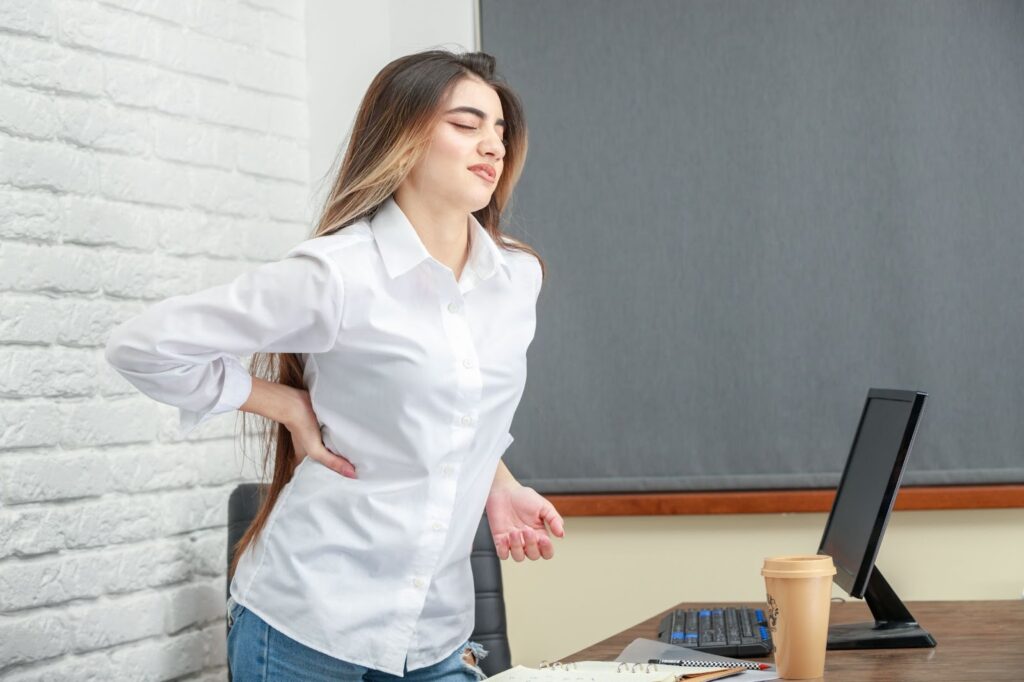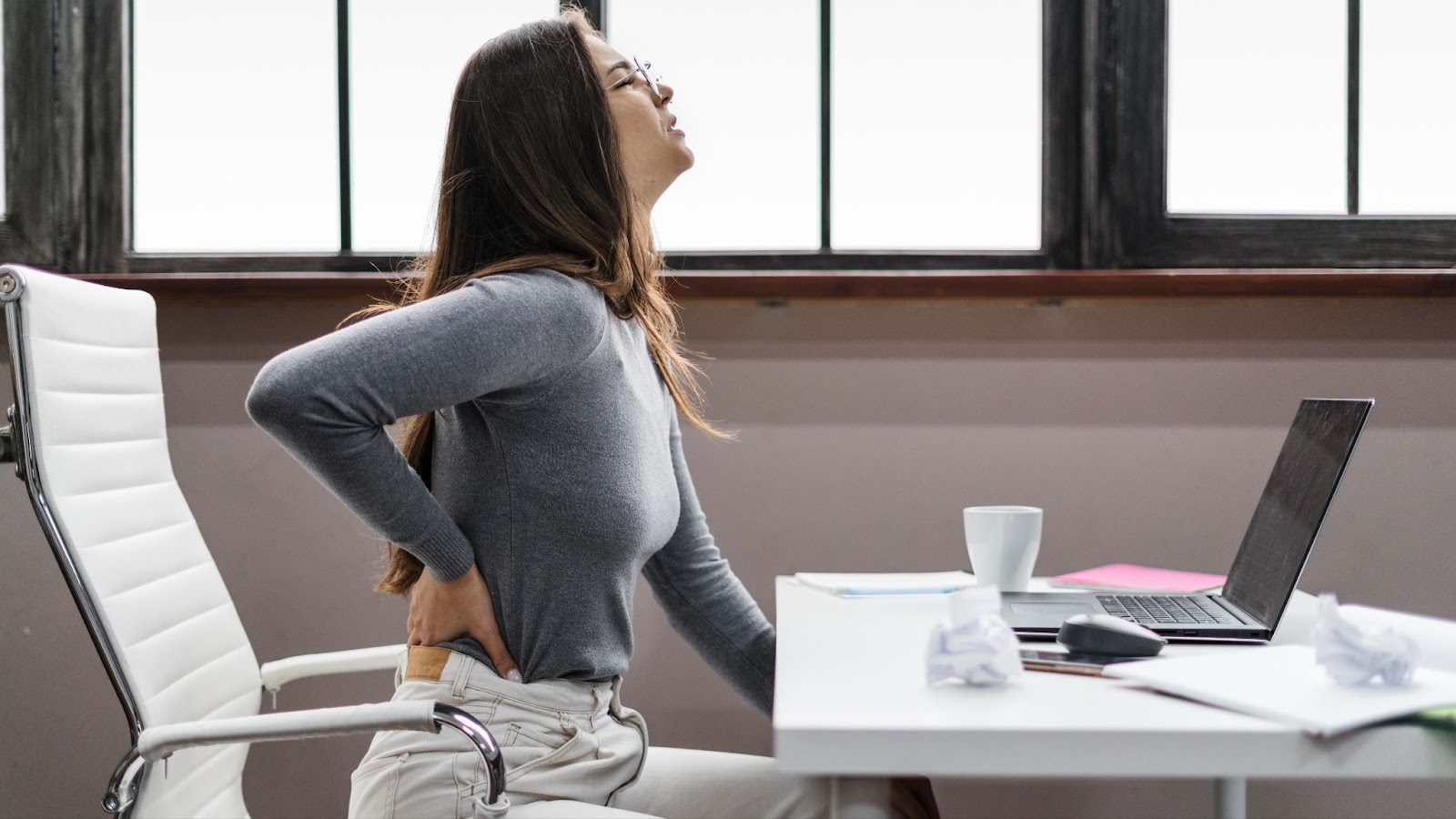Two centuries ago, the realm of desk employment was a realm reserved exclusively for the elite echelons, constituting a mere 1% of society’s upper crust. Fast forward to the present era, and the landscape has dramatically shifted, propelled by the dual forces of technological progress and the pervasive impact of a global pandemic. Nowadays, the vast majority of the populace finds themselves ensconced in a sedentary lifestyle, where work, leisure, and the bulk of daily existence are conducted from a seated position.
Yet, despite the ubiquity of this modern way of life, it does not necessarily equate to well-being. The act of sitting exacts a toll, particularly on the delicate structure of the human back.
For the myriad individuals grappling with the discomfort of lower back pain induced by prolonged sitting, the experience can be confounding. After all, how does one develop such agony while ostensibly at rest throughout the day?
While it is indisputable that acute pain and injuries necessitate ample rest for the body to convalesce, not all forms of discomfort are assuaged by reclining. In truth, the protracted periods spent seated can serve as a catalyst for lower back pain, manifesting through various mechanisms.
The Impact of Incorrect Posture on Lower Back Pain
One of the most common yet overlooked causes of lower back pain when sitting but not standing, is poor posture. Assume for a moment that you’re seated hunched over a keyboard or slouched on a couch; this position puts an unnatural strain on your muscles and ligaments, causing them to stretch and twist uncomfortably.
As the day progresses, our commitment to maintaining an erect posture often diminishes. Sitting for extended periods, possibly for a full work day of eight hours or more, exaggerates this negative impact on your postural alignment. This continuous strain is likely to result in lower back pain.
So, if you find your back aching at the end of the day, reflecting on your sitting posture could provide an answer. Here are a few tips to maintain good posture:
- Adjust your chair height to keep feet flat on the floor;
- Keep your back straight and shoulders back;
- Take regular breaks to stand, stretch and walk around.
Understanding Spinal Disc Compression and its Link to Back Pain
Spinal discs, the spongy absorbers located between each vertebra, play a critical role in maintaining spinal health by preventing the vertebrae from rubbing against each other. Healthy discs contribute to a pain-free back. However, their efficacy is compromised when we indulge in prolonged sitting.
The extended sitting period leads to the compression of these discs, causing them to bulge outwards. This bulging can exert additional pressure on the spinal cord, leading to discomfort and pain. This experience can be alarming when this pain starts radiating to other body parts as well.
Therefore, if your lower back discomfort seems to be spreading to different parts of your body, it might be time to reassess your sitting routine and make necessary adjustments to mitigate potential spinal disc compression. Here are a few helpful strategies:
- Sit on a balance ball chair to strengthen your core and relieve pressure on your discs;
- Perform exercises that strengthen your back and core muscles;
- Practice yoga and stretches designed to enhance spinal health.
The Role of Hip Flexors in Lower Back Pain
Long hours spent in a seated position can lead to the shortening of hip flexors. These muscles, running from the top of the thighs to the lower back, significantly impact your posture. When they become too tight, due to prolonged sitting, they can induce anterior pelvic tilt – a forward rotation of the pelvic bones. This condition puts your lower back into an uncomfortable position, creating discomfort even while standing.
The effects of shorter hip flexors can be mitigated with exercise, but it’s even more crucial to address the root, prolonged sitting. Here are some tips to combat this:
- Include hip flexor stretches in your daily routine;
- Use a standing desk to reduce sitting time;
- Adjust sitting postures regularly during prolonged sitting.
Back Strain: An Overlooked Consequence of Prolonged Sitting
While walking or standing, the weight of the upper body is efficiently shared by the legs and core muscles. However, when seated, the spine alone has to bear this weight. Without active engagement of core muscles (which generally isn’t done while sitting), your lower back is left to support the entire upper half of your body singlehandedly. This unnecessary strain on the lower back can lead to extreme fatigue and discomfort.
Here are some ways to avoid back strain from prolonged sitting:
- Engage in core-strengthening exercises daily;
- Remember to activate your core even while sitting;
- Opt for an ergonomic chair that offers good back support;
- Use a lumbar roll for supported sitting.
Circulatory Issues and the Connection to Lower Back Pain
An optimized workspace that prioritizes ergonomics is crucial for maintaining healthy blood flow, particularly when spending long hours seated. Sitting in a chair where the knees are elevated higher than the hips may cause the chair’s edge to exert pressure on the blood vessels in your legs, impeding normal circulation.
Reduced blood flow may not only lead to lower back pain but also contribute to the development of varicose veins and deep vein thrombosis (DVT), both of which can cause discomfort and potentially severe health issues in the long run.
Here are some guidelines to create an ergonomic workspace:
- Adjust the height of the chair so that your feet rest comfortably on the ground, with knees at the same level, or slightly lower than your hips;
- Use a footrest if your feet don’t reach the floor;
- Choose a chair with good lumbar support, and if necessary, use a cushion to maintain the natural curve of your spine.
The Necessity of Regular Movement for Spinal Health
The human body is designed for regular movement and changes in position. Hours of uninterrupted sitting can cause joints and muscles to become acclimatized to this sedentary posture, resulting in discomfort when you attempt to move or change positions. This can even discourage individuals from regular exercise, blaming ‘bad knees’ or other similar reasons.
The reality is, these problems usually stem from insufficient movement. Engaging in regular breaks for movement, stretching, and light exercise can greatly improve overall comfort and reduce the risk of pain related to prolonged sitting.
Here are some strategies to increase movement:
- Aim for at least five minutes of movement every hour;
- Stretch your major muscle groups, focusing on your back, neck, and legs;
- Invest in an adjustable desk that allows for both sitting and standing;
- Consider incorporating light exercises such as walking or cycling into your lunch break.
Proactive Solutions for Lower Back Pain
Despite the potential negative health effects of a sedentary lifestyle, it doesn’t mean that you need to switch careers or make dramatic lifestyle changes. There are numerous strategies you can employ to alleviate the symptoms of lower back pain when sitting.
Embrace Ergonomics at Your Workspace
Switching to an ergonomic setup at your workspace can remarkably lessen the strain on your body, particularly on the lower back. By adjusting your chair and desk to suit your body’s proportions, you can maintain a more natural body posture throughout the day. Some options to consider:
- Integrate lumbar support: A lumbar cushion, or a chair with built-in lumbar support, can help maintain the spine’s natural curve, reducing strain on the lower back;
- Explore standing desks: Alternating between sitting and standing during your work hours can help alleviate the stress on your back;
- Workout while you work: Consider treadmill desks or under-desk cycles to add some physical activity into your routine.
Prioritize Proper Posture Everywhere
Surprisingly, maintaining an ergonomic posture is not just limited to your workspace, it applies to every seated situation. Whether you’re lounging on the couch, dining at a restaurant, or waiting at the dentist’s office, conscious effort to maintain good posture can prevent undue stress on your back. Some recommendations:
- Keep your back straight: No matter where you sit, ensure the back of the chair supports your spine;
- Feet on the floor: Always keep both feet flat on the floor instead of crossing your legs;
- Standing posture: Even when you’re standing or walking, maintain your back in a straight, natural posture.
Remember, while these adjustments can offer significant relief, it’s crucial to complement these efforts with regular movement and exercises designed to strengthen your core and back.
Embrace an Active Lifestyle for a Healthy Back
Engaging in regular physical activity is a vital step towards alleviating lower back pain. Research has affirmed that prolonged sitting can be detrimental to health, but regular exercisers can significantly lower these risks. Consistent movement encourages blood circulation and helps to stretch stiff muscles and joints.

Incorporate Low-Impact Exercises
Including low-impact exercises such as yoga, Pilates, or even brisk walking into your routine can contribute to maintaining your physical well-being without causing further strain on your joints. These exercises can improve core strength, flexibility, and posture – all of which are crucial for a healthy back.
Some useful tips for incorporating movement into your routine:
- Get up and move: Make it a habit to stand up and move around for a few minutes for every half-hour you spend sitting;
- Opt for walking meetings: If feasible, trade traditional conference room meetings for walking meetings;
- Try desk-based exercises: Plenty of exercises and stretches can be performed right at your desk, helping to break the monotony of sitting.
Consider Chiropractic Care
Chiropractic care, though often misunderstood, can be a powerful tool for combatting back pain. Chiropractors specialize in aligning the body’s musculoskeletal structure, allowing your body to function optimally.
The ethos of chiropractic care revolves around enabling the body to heal itself through proper alignment. Techniques such as chiropractic adjustments, flexion-distraction, E-stim, and massage therapy can all contribute to the management of lower back pain.
Remember, it’s always advisable to consult with a healthcare professional before starting a new treatment plan or exercise routine. With the right approach, lower back pain from prolonged sitting can be significantly reduced, if not eliminated.
Conclusion
In conclusion, the evolution of societal norms has ushered in an era where sedentary lifestyles predominate, with desk-bound work and leisure activities becoming the norm for many. However, this convenience comes at a cost, particularly to the health of our backs. The prevalence of lower back pain among those who spend extended periods seated underscores the imperative for a holistic approach to well-being, one that encompasses regular movement, ergonomic considerations, and proactive measures to mitigate the adverse effects of prolonged sitting. As we navigate the complexities of modern life, it is essential to prioritize the care of our bodies, recognizing that a balanced approach to physical activity and rest is key to maintaining optimal health and vitality in the long run.



